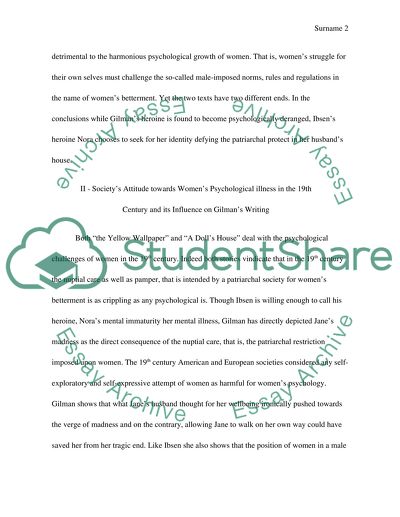Cite this document
(“The Psychological Challenges of Oppressed Women Regarding Charlotte Research Paper”, n.d.)
Retrieved from https://studentshare.org/english/1433643-the-psychological-challenges-of-oppressed-women-regarding-charlotte-perkins-gilman-the-yellow-wallpaper-and-henrik-ibsens-a-dolls-house
Retrieved from https://studentshare.org/english/1433643-the-psychological-challenges-of-oppressed-women-regarding-charlotte-perkins-gilman-the-yellow-wallpaper-and-henrik-ibsens-a-dolls-house
(The Psychological Challenges of Oppressed Women Regarding Charlotte Research Paper)
https://studentshare.org/english/1433643-the-psychological-challenges-of-oppressed-women-regarding-charlotte-perkins-gilman-the-yellow-wallpaper-and-henrik-ibsens-a-dolls-house.
https://studentshare.org/english/1433643-the-psychological-challenges-of-oppressed-women-regarding-charlotte-perkins-gilman-the-yellow-wallpaper-and-henrik-ibsens-a-dolls-house.
“The Psychological Challenges of Oppressed Women Regarding Charlotte Research Paper”, n.d. https://studentshare.org/english/1433643-the-psychological-challenges-of-oppressed-women-regarding-charlotte-perkins-gilman-the-yellow-wallpaper-and-henrik-ibsens-a-dolls-house.


